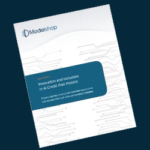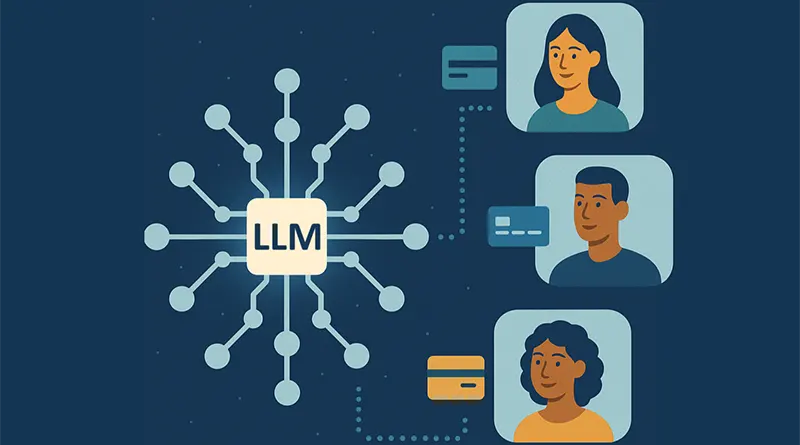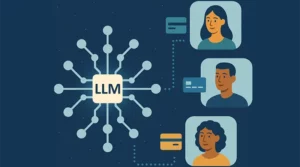Fellow Credit Union Enthusiasts,
I’m starting this newsletter to begin an honest, practical conversation about AI and credit unions. If you’re reading this, we’ve likely crossed paths in our shared mission to modernize lending, and I hope you’ll find these insights useful. If you do, please share this newsletter.
Let me start with a confession: I’ve followed AI closely for decades, but even I didn’t expect the recent breakthroughs in large language models (LLMs) to happen so fast, or to be so powerful. I’ve read every Kurzweil and Bostrom book, always thinking the Singularity was far off. Now, I’m not so sure. For those unfamiliar, the Singularity is the point where AI surpasses human intelligence and begins advancing on its own.
Existential musings aside, what’s happening with AI today will have a profound and immediate impact on every industry. This isn’t just hype. It’s real, and it’s moving fast.
Why It Matters to Credit Unions
In the next 18–24 months, AI will transform how credit unions operate, especially smaller ones. Unlike past tech shifts, LLMs are accessible to everyone, not just large institutions. If you’re thinking, “We’ll wait and see what the big credit unions do first,” please reconsider. This is your moment too.
This newsletter will explore how LLMs can reshape financial services, especially for credit unions and community banks. Much of the dialogue will be centered around credit products, because that is where I have the deepest experience, but the insights can be applied across financial services. I’m not writing as a vendor pitching a product, but as a technologist curious about where this is going and how we can all benefit.
The Big Picture
AI has the potential to reverse the trend of financial services consolidation. Why? Because it levels the playing field. With AI, credit unions can offer highly personalized financial services that reflect their members’ unique needs, without needing massive teams or budgets. The credit union’s strength – community and personalization – is precisely where AI shines, and it is what consumers are looking for.
So why haven’t previous “AI” tools delivered this kind of impact? Because they weren’t intelligent. For years, technology vendors (including me) have used the term AI when describing predictive analytics. Risk scores and classification models are helpful, but they’re just advanced statistical fitting algorithms. Whether you’re using a generic industry score or a custom model, the result is usually a single risk number. That’s just not enough to capture the complexity of your members’ financial lives.
Many credit unions have rightfully been disappointed with the limitations of score-based decisioning. The human insights and relationship knowledge that underwriters bring to the table still outperform what traditional machine learning models can do.
What Makes LLMs Different
LLMs are changing the game. Instead of being trained to make a single prediction, LLMs learn broad patterns in language and data, allowing them to generate original responses and adapt to a wide variety of tasks. That is where the term generative AI originated. Think of LLMs as extremely bright assistants who can draw upon vast amounts of information to help you achieve your goals. They don’t have your experience or your vision, and (so far) they don’t have an agenda, but they’re ready to listen and they’re very good at adapting to your evolving requests.
This is why LLMs represent such a powerful opportunity for credit unions. They are designed to interpret the direction of your staff and amplify it by generating automations that deliver on your goals. LLMs will absorb and accelerate the culture of your organization, which is what will help keep credit unions unique, and they will allow you to create exceptional member experiences that reflect that culture. You won’t be locked into a one-size-fits-all product. You’ll be able to design and test new products, credit policies, build member engagement tools, and automate member decisions using plain language prompts. This is a giant leap forward in technology accessibility and agility.
LLMs will quickly be integrated into software platforms, workflows, and member interactions across the board. Legacy vendors who have historically been slow to evolve will begin delivering innovative, AI-powered capabilities that feel almost magical. Best of all, these innovations will be available to credit unions of all sizes. You won’t need a dedicated data science team or a seven-figure budget to compete.
What’s Next
Like most software vendors, my team is actively working to integrate LLMs into our solution, and I’ve been amazed at how quickly we’ve progressed. Over the next few weeks, I’ll share real-world scenarios for how LLMs will impact credit unions, and I will illustrate how the technology works with concrete examples.
As a preview, here are four key areas to watch:
- Better member insights – AI will simplify the integration of new data and reveal patterns in your members’ financial lives, helping you offer smarter, more personalized products.
- Prompt-based product design – No more complex syntax or custom code. Just describe your financial products in plain language, and AI will predict product performance and deliver real-time offers through any channel.
- AI-negotiated credit offers – Members will soon leverage AI agents to find and customize the best credit offers for their unique needs.
- Seamless marketing-to-loan journeys – Forget vague teaser rates. Every member interaction will include genuine, pre-negotiated offers designed to optimize their financial lives.
My goal is to separate reality from hype and focus on practical ways AI can improve how we serve members together. Thanks for reading, and I look forward to hearing your thoughts.
Tom Tobin. CEO Modelshop
Join the conversation and subscribe to this newsletter on LinkedIn:






